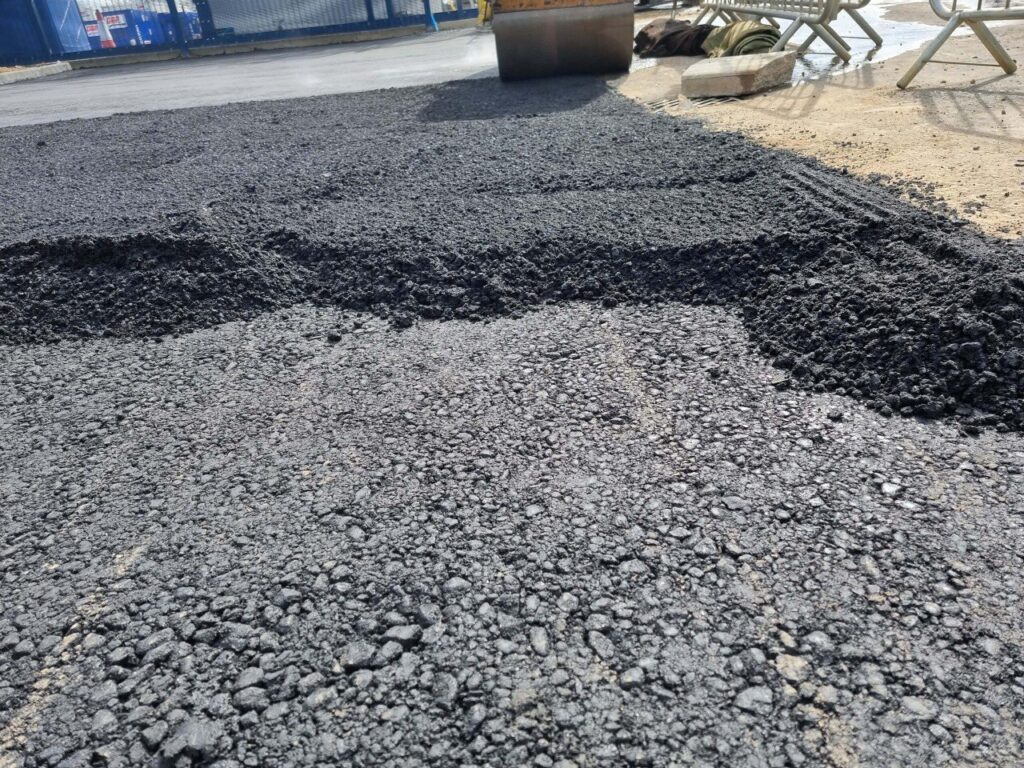Porous Tarmac: Eco-Friendly Solutions for Stormwater Management
Introduction: Stormwater management is a pressing concern for communities worldwide. As urbanisation increases, impervious surfaces like roads and parking lots contribute to flooding, water pollution, and decreased groundwater recharge. Porous tarmac, also known as absorbent or porous asphalt, is an eco-friendly solution that addresses these issues by allowing rainwater to pass through the surface, reducing runoff, and promoting natural filtration. In this blog post, we’ll explore the benefits of porous tarmac and its role in sustainable stormwater management.
What Is Porous Tarmac?
A porous tarmac is a specially designed type of asphalt that contains voids or interconnected pores, allowing water to infiltrate through the surface and into the underlying ground. It is constructed using a permeable aggregate mix and a modified binder that provides stability while maintaining permeability. Porous tarmac is ideal for roadways, parking lots, driveways, and other surfaces where stormwater management is essential.
The Benefits of Porous Tarmac
Reduced Stormwater Runoff: The most significant advantage of porous tarmac is its ability to reduce stormwater runoff. Instead of water accumulating on the surface and potentially causing flooding, it infiltrates through the pores and is naturally absorbed into the ground.
Improved Water Quality: As rainwater passes through the porous tarmac, it undergoes natural filtration, removing pollutants and contaminants. This process enhances water quality and reduces the risk of pollutants entering rivers and streams.
Groundwater Recharge: Porous tarmac promotes groundwater recharge, replenishing aquifers and maintaining the water table. This is crucial for sustaining local ecosystems and water supplies.
Reduced Urban Heat Island Effect: The permeable nature of porous tarmac helps mitigate the urban heat island effect by allowing rainwater to cool the surface and reduce heat buildup.
Enhanced Safety: Porous tarmac minimises puddles and standing water on roadways, improving road safety and reducing the risk of hydroplaning.
Installation and Maintenance
Installing and maintaining porous tarmac requires specialised knowledge and equipment. Here’s a simplified overview of the process:
Subbase Preparation: The subbase is prepared to provide stability and proper drainage.
Porous Tarmac Installation: The porous tarmac mix is laid and compacted in layers, ensuring a stable surface.
Regular Maintenance: To maintain permeability, routine maintenance involves vacuuming debris from the surface and inspecting the system for clogs or damage.
Conclusion: Porous tarmac is a sustainable and eco-friendly solution for managing stormwater in urban environments. It reduces runoff, improves water quality, and promotes groundwater recharge while offering the durability and functionality of traditional asphalt surfaces. At Tenterden Driveways, we recognise the importance of sustainable practices in road and driveway construction. Porous tarmac is a valuable addition to our repertoire, allowing us to create surfaces that serve their intended purpose and contribute to a greener and more resilient environment.
Call us on: 01580 239 596
Click here to find out more about Tenterden Driveways
Click here to complete our contact form and see how we can help with your driveway needs.

